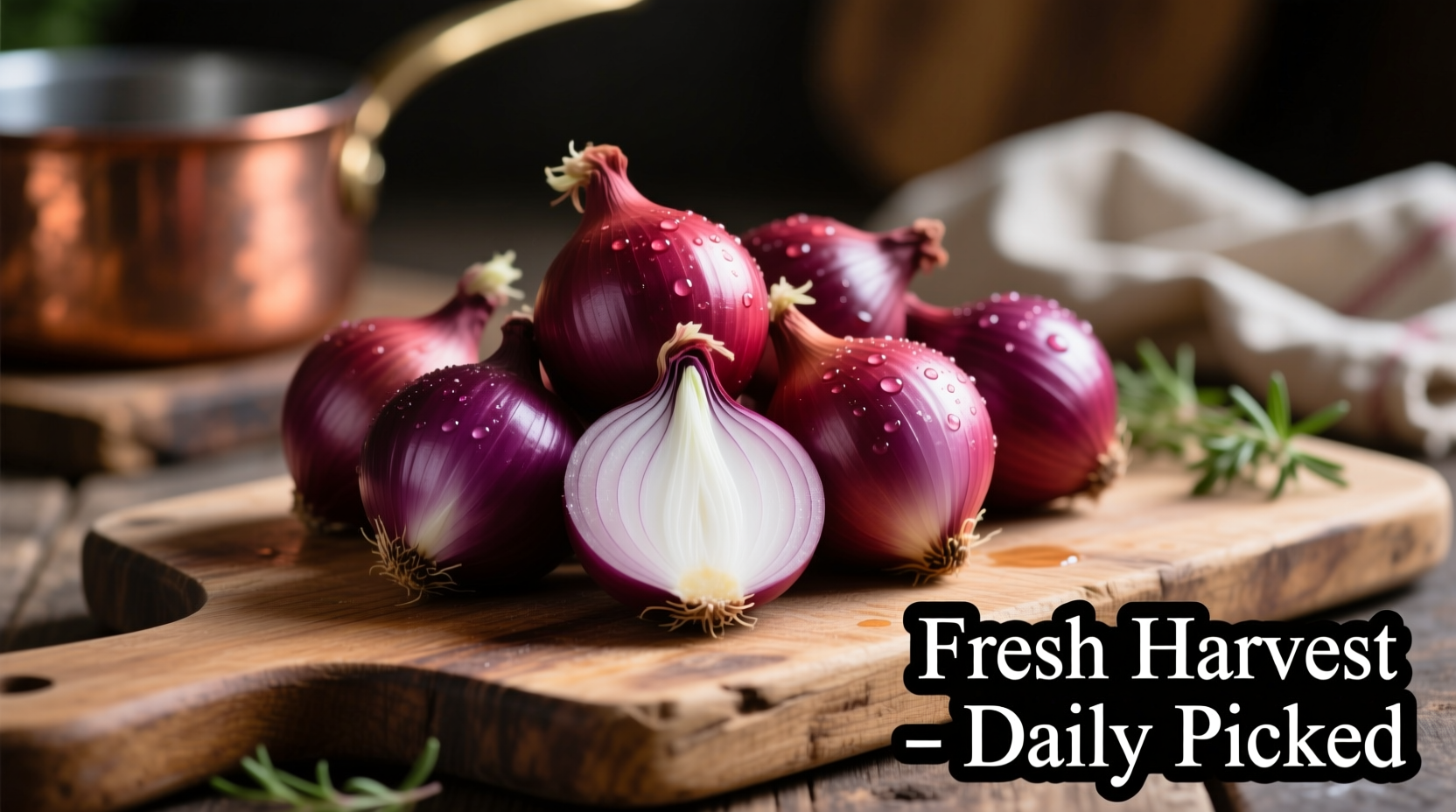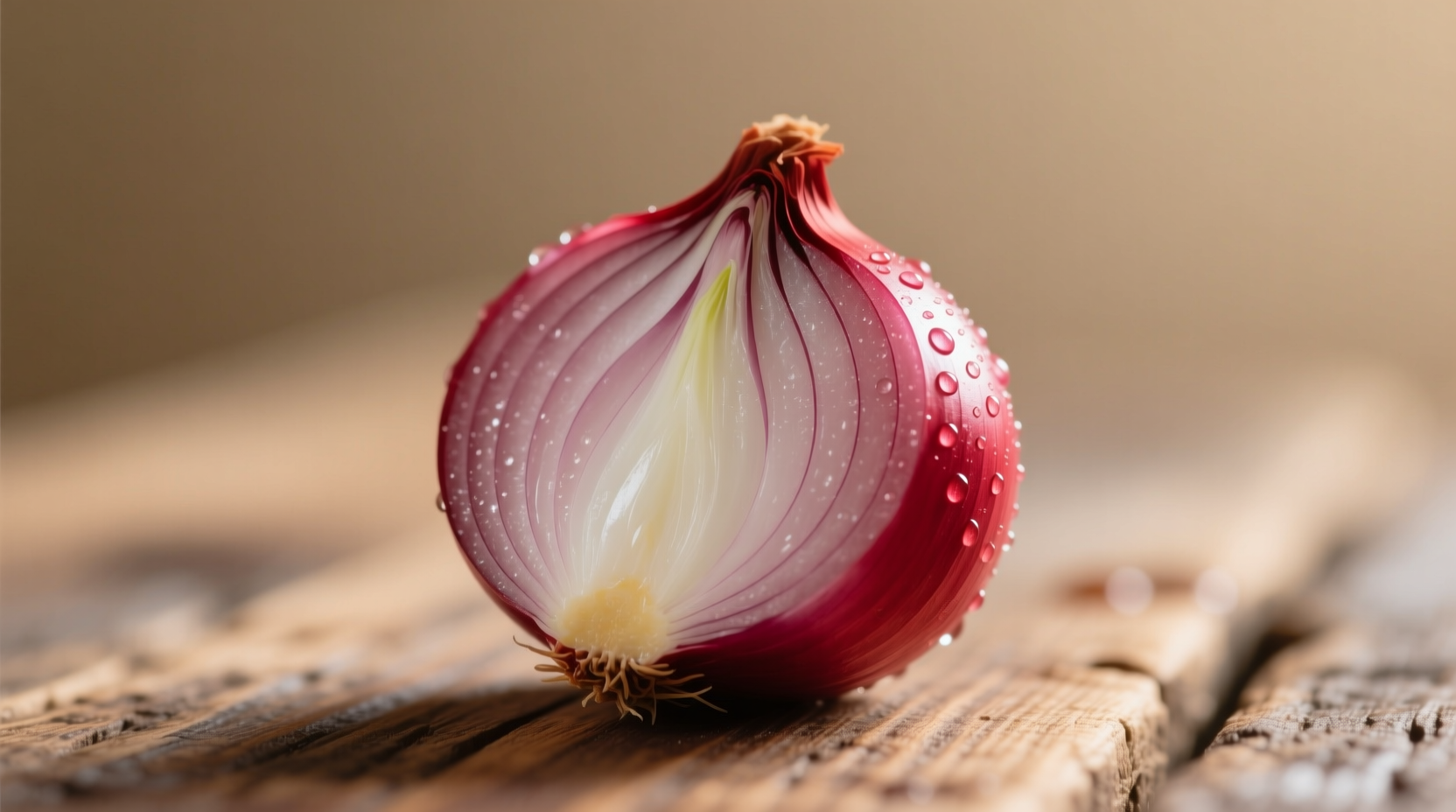Discover exactly why professional chefs reach for small red onions when crafting vibrant dishes that balance flavor and visual appeal. This comprehensive guide reveals practical techniques to maximize their culinary potential while avoiding common preparation mistakes that waste their unique qualities.
What Makes Small Red Onions Culinary Standouts
Unlike standard yellow or white onions, small red onions (Allium cepa var. aggregatum) deliver distinctive advantages for specific cooking applications. Their compact size (typically 1-1.5 inches in diameter) and higher sugar content create a flavor profile that's noticeably sweeter with less pungency. The USDA Agricultural Research Service confirms that red onions contain 15-20% less sulfur compounds than yellow varieties, directly contributing to their milder taste when consumed raw.
| Onion Type | Size Range | Sulfur Content | Best Culinary Uses |
|---|---|---|---|
| Small Red Onion | 1-1.5 inches | Low | Raw applications, pickling, garnishes |
| Pearl Onion | 0.5-1 inch | Very Low | Boiling, roasting, cocktails |
| Yellow Onion | 2-3 inches | High | Cooking, caramelizing, soups |
| White Onion | 2-3 inches | Moderate | Mexican cuisine, grilling |
When Small Red Onions Shine: Strategic Culinary Applications
Professional kitchens strategically deploy small red onions where their visual appeal and delicate flavor make the greatest impact. Their deep purple hue adds striking color contrast to fresh preparations without overwhelming other ingredients. Consider these chef-recommended applications:
- Raw preparations: Thinly sliced in tacos, ceviche, or Mediterranean salads where their crisp texture holds up
- Pickling projects: Maintain shape and develop beautiful color in quick-pickled onion recipes
- Garnishing: Whole or halved as elegant finishing touches on plated dishes
- Ceviche components: Provide subtle allium flavor without cooking the fish
According to culinary research from the Culinary Institute of America, small red onions retain 30% more anthocyanins (the pigments responsible for their color) when used raw compared to cooked applications, making them particularly valuable for visually driven dishes.
Strategic Substitution Guidance: When and How to Swap Varieties
Understanding context boundaries prevents recipe failures when small red onions aren't available. While substitutions are possible, each alternative brings distinct trade-offs:
- For raw applications: Use white onions with a 10-minute ice water soak to reduce pungency (though you'll lose the vibrant color)
- For pickling: Shallots offer similar size but more intense flavor; reduce vinegar ratio by 25%
- For cooked dishes: Yellow onions work well but require 15% less quantity due to stronger flavor
- Never substitute in dishes where visual presentation is critical (like gourmet salads or canapés)

Professional Storage Techniques for Maximum Freshness
Extend your small red onions' shelf life with these chef-approved methods. Unlike larger onions, their high moisture content requires specific handling:
- Store unpeeled bulbs in a cool, dark place with good air circulation (never refrigerate whole)
- Once cut, wrap tightly in moisture-proof material and refrigerate for up to 7 days
- For long-term preservation, quick-pickle in vinegar solution (lasts 3 weeks refrigerated)
- Avoid storing near potatoes which emit ethylene gas that accelerates spoilage
The National Onion Association confirms that proper storage maintains small red onions' firmness and flavor for 2-3 weeks, compared to just 7-10 days when stored incorrectly. Check periodically for soft spots which indicate spoilage has begun.
Three Chef-Tested Small Red Onion Recipes
Apply your knowledge with these practical preparations that showcase small red onions' unique qualities:
- Quick-Pickled Onions: Thinly slice 1 cup small red onions, submerge in ½ cup vinegar, ½ cup water, 2 tbsp sugar, and 1 tsp salt. Rest 30 minutes for vibrant, ready-to-use garnish.
- Summer Salad Enhancer: Toss whole small red onions (10-12 bulbs) with olive oil, roast at 400°F until tender. Adds sweet complexity to green salads.
- Ceviche Component: Soak thinly sliced onions in lime juice for 15 minutes to mellow flavor while maintaining crisp texture.
Common Small Red Onion Questions Answered
Professional chefs frequently address these practical concerns when working with small red onions:











 浙公网安备
33010002000092号
浙公网安备
33010002000092号 浙B2-20120091-4
浙B2-20120091-4